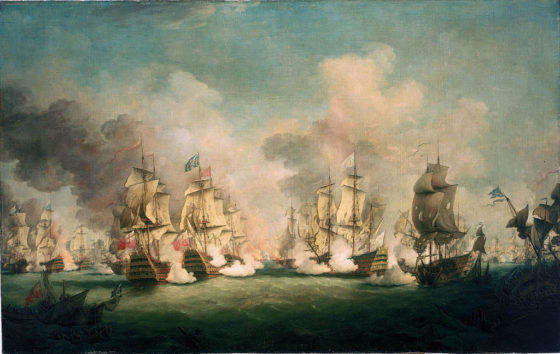
“Some Copperheads even pushed for New York to itself withdraw from the Union, declare the city neutral and continue to trade with the Confederacy.”
IN 1860, New York City was the commercial, cultural and industrial epicentre of the United States. Its bustling streets, lively wharfs and booming mills seemed to embody the modernity and prosperity that characterized the North.
Yet surprisingly, when rebellion split the republic, many in this quintessentially Yankee metropolis balked at the prospect of fighting to preserve the Union. In fact, a number of New York’s most prominent citizens, including the city’s own mayor, quietly supported the Southern cause and for a time even openly advocated secession.
In the 2013 book The Civil War in 50 Objects, author Harold Holzer uses a random assortment of artifacts from the conflict (an officer’s footlocker, a zouave uniform, a pair slave’s shackles, etc.) to put the epic four-year struggle into perspective. One of the items showcased in the book is a January 1861 declaration of secession signed by none other than New York mayor Fernando Wood.

The 49-year-old former Congressman and noted Democrat, along with an assortment of anti-war businessmen with Southern ties known collectively as Copperheads, rightly feared that a conflict between North and South would impair the city’s lucrative trade with cotton growers below the Mason Dixon Line. Some Copperheads even pushed for New York to itself withdraw from the Union, declare the city neutral and continue to trade with the Confederacy. To that end, in 1861, Wood sent envoys to Richmond and was in communication with the leaders of six southern states.
And it wasn’t just the Big Apple’s elites that were opposed to the war — many ordinary New Yorkers, particularly recent immigrants from Europe, had little interest in the conflict. New arrivals were less than eager to take part in a contest that they felt didn’t concern them, while others feared that a Southern defeat would lead to an influx of freed slaves that would create additional competition for jobs while driving wages down.
Eventually, President Lincoln arranged a trip to New York to meet with the truculent mayor. Shortly after the meeting, Wood toned down the rhetoric and backed away from New York independence. The following year, voters placed a local Republican and staunch Unionist named George Opdyke in the mayor’s office.
The draft riots
While the secession scare may have ended early in the war, a surprising number of New Yorkers were still hostile to the conflict in general.
When in July of 1863, Congress authorized conscription, New York exploded into three days of bloody riots. Angry mobs attacked and killed free blacks by the dozens and even burned a hospital for African American orphans. Militia units that were rushed into the city were quickly reinforced by regular infantry and artillery fresh from the field at Gettysburg. Authorities temporarily suspended conscription in New York while the federal troops cracked down on the mobs. More than 120 died in the unrest; at least 2,000 were injured.

New York pitches in
Despite the turmoil, other New Yorkers were enthusiastic contributors to what some labelled as Mr. Lincoln’s War. More than 150,000 citizens of the Big Apple flocked to the Union colours, while another 50,000 enlisted in the navy. Noted outfits like the 10th and 11th New York Volunteer Infantry and the 1st U.S. Sharpshooters were all formed in New York. The city itself also financially supported the Union – New Yorkers contributed $150 million to the war effort.

Southern terrorism
While the Big Apple was initially seen by many as a hotbed for southern sympathy, Confederate agents planned a series of attacks on the city in 1864 – ostensibly to disrupt the federal election that year. While the operation, which targeted a series of Manhattan hotels on voting day, was thwarted by an informant within the rebel cell itself, a follow-up attack in late November did see a number of buildings burn, including a museum belonging to circus magnate P.T. Barnum. The fires were all doused before too much damage was inflicted and the agents fled north to Canada.









